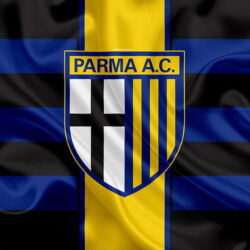Arsenal FC is not just a football club; it is an institution that has woven itself into the fabric of English football culture and sports history. Established over a century ago, Arsenal FC has transcended its role as a mere team to become a symbol of passion, resilience, and community spirit among fans. With a storied past filled with triumphs and struggles, Arsenal has continued to evolve while maintaining its core identity.
In this blog post, we will delve deep into the rich history of Arsenal FC, exploring its origins, key moments, memorable players, legendary managers, and how it has shaped the landscape of football in England and beyond.
The Early Years: Foundation and Growth Arsenal FC
The story of Arsenal FC began in 1886 in Woolwich, London, when a group of munitions workers at the Royal Arsenal factory formed a football team known as Dial Square. As the club evolved, it adopted the name Woolwich Arsenal, becoming a professional entity in 1891. By understanding these early years, we can appreciate the humble beginnings of one of the most beloved football clubs in the world J88.
The Formation of the Club
The initial formation of the club was driven by a desire for camaraderie and competition among the workers. It wasn’t long before they began to gain traction within local leagues. In 1887, Woolwich Arsenal joined the Southern League, marking its first step toward greater recognition. This period was characterized by enthusiasm and ambition, with the club quickly establishing itself as a force to be reckoned with.
The decision to turn professional in 1891 was pivotal. It allowed Woolwich Arsenal to attract better players and compete more effectively against their amateur rivals. This transition marked the beginning of the club’s transformation from a local team to a serious competitor on a national scale. During this time, the club also changed its name to simply Arsenal FC, shedding the Woolwich moniker, indicating its growing aspirations.
Transition to North London
In 1913, a significant chapter unfolded in the club’s history when Arsenal made the move from Woolwich to Highbury in North London, primarily due to financial difficulties. This relocation was not merely geographical; it transformed Arsenal into a club that would come to represent the diverse and dynamic area of North London.
The new home at Highbury provided Arsenal with a modern stadium and opportunities for growth. Fans flocked to support the team, and soon the club began to develop a passionate following. This was the dawn of a new era, where Arsenal sought to solidify its place in the top tiers of English football and reach out to a broader supporter base.
Early Success: The First Trophies
By the 1930s, Arsenal FC began to find success on the pitch, winning its first league title in 1994, followed by subsequent victories in the FA Cup. The emergence of manager Herbert Chapman in the 1920s played a crucial role in this blossoming period. Chapman introduced innovative tactics, including the famous WM formation, which revolutionized English football.
Under Chapman’s management, Arsenal won its first major trophy in 1930, securing the FA Cup after defeating Huddersfield Town. This victory set the stage for a glorious decade in which Arsenal established itself as a dominant force in English football, winning five league titles and two FA Cups by the end of the 1930s.





¡Hola estrategas de las apuestas!
Recibe hasta 100€ gratis sin mover tu dinero. Los casinos online ofrecen estas promociones para atraer nuevos usuarios. ¡Aprovecha mientras duren!
PromociГіn: giros gratis por registro sin depГіsito – http://100girosgratissindepositoespana.guru.
¡Que tengas magníficas resultados asombrosos !
¡Hola estrategas de las apuestas!
Consigue giros gratis por registro sin depósito en segundos, sin esperas ni validaciones lentas. Asà puedes comenzar tu juego de inmediato. ¡Y sin pagar!​
Descubre todo lo que puedes ganar con 25 giros gratis sin depГіsito y sorprГ©ndete.
¡Que tengas magníficas victorias memorables !
¡Hola, maestros de las apuestas !
Si te gustan los casinos online, los bonos sin depГіsito son perfectos para empezar a jugar.
Winzingo ofrece 10 euros gratis sin necesidad de depГіsito para nuevos usuarios. Aprovecha esta promociГіn y explora una amplia variedad de juegos emocionantes. Es la oportunidad perfecta para comenzar tu experiencia en el casino.
п»їConsigue 10 euros gratis sin depГіsito en tu casino favorito – https://www.youtube.com/@squeezer007
¡Que tengas excelentes triunfos !
¡Saludos, expertos en casinos !
giros gratis casinos chile
Mejores casinos online chile con bonos exclusivos y promociones – п»їhttps://www.youtube.com/watch?v=CRuk1wy6nA0
п»їВїSabГas que puedes disfrutar de casinos online chile desde cualquier parte del paГs? Estas plataformas permiten jugar con seguridad, bonos atractivos y mГєltiples opciones de entretenimiento. Muchos jugadores en Chile ya han descubierto esta nueva forma de apostar.
¡Que disfrutes de momentos llenos de suerte!
¡Hola, seguidores de las apuestas!
Al registrarte en casinos fuera de espaГ±a puedes aprovechar bonos sin necesidad de depГіsito inicial.Esta es una gran forma de probar antes de invertir dinero real.Las condiciones son claras desde el inicio.
Los juegos disponibles son de proveedores reconocidos internacionalmente.
Casino por fuera con acceso inmediato sin restricciones – https://www.casinoporfuera.xyz/
¡Que disfrutes de logros impresionantes
¡Hola, usuarios de sitios de apuestas !
Casino online fuera de EspaГ±a se asocia cada vez mГЎs con pagos rГЎpidos y sin comisiones. Estas plataformas priorizan la eficiencia en los retiros. TambiГ©n permiten apuestas desde montos mГnimos accesibles.
Las apuestas en vivo son una experiencia mucho mГЎs fluida en casinos fuera de EspaГ±a. casino online fuera de espaГ±a La plataforma responde mejor y no hay interrupciones por verificaciones. AsГ se maximiza la diversiГіn.
Casino online fuera de EspaГ±a: anonimato y pagos cripto – п»їhttps://casinofueradeespanol.xyz/
¡Que experimentes premios deslumbrantes !
¡Saludos, seguidores del entretenimiento !
En los mejores casinos online extranjeros puedes obtener recompensas semanales por tu actividad sin necesidad de apostar grandes cantidades.
Casino online extranjero con verificaciГіn rГЎpida – https://www.casinos-extranjeros.es/#
Los casinos online extranjeros suelen actualizar sus catГЎlogos de juegos cada semana, lo que permite descubrir nuevas opciones constantemente. TambiГ©n incorporan funciones innovadoras como torneos relГЎmpago o misiones con premios. La experiencia es dinГЎmica y siempre emocionante.
¡Que disfrutes de increíbles jugadas magistrales !
¡Saludos, usuarios de sitios de apuestas !
Un casino online sin licencia en EspaГ±a te permite apostar sin preocuparte por lГmites de depГіsito. AdemГЎs, muchos ofrecen torneos diarios con premios en efectivo. Es una opciГіn atractiva para jugadores competitivos.
Puedes jugar de forma totalmente anГіnima usando navegadores privados o VPN. Nadie rastrea tu ubicaciГіn ni tus datos personales.casinos-sinlicenciaenespana.es
Casinos sin licencia: consejos para jugar seguro en EspaГ±a – п»їcasinos-sinlicenciaenespana.es
¡Que disfrutes de recompensas asombrosas !
¡Saludos, aventureros del riesgo !
CasinosSinLicenciaenEspana.es y gana sin lГmites – https://www.casinossinlicenciaenespana.es/ casino online sin licencia espaГ±a
¡Que vivas sesiones inolvidables !
¡Hola, estrategas del azar !
Casino online extranjero que no exige verificaciГіn documental – https://www.casinoextranjerosespana.es/# mejores casinos online extranjeros
¡Que disfrutes de asombrosas premios extraordinarios !
¡Saludos, estrategas del juego !
Casino online extranjero aceptando tarjetas VISA – https://www.casinosextranjerosenespana.es/ casino online extranjero
¡Que vivas increíbles giros exitosos !
¡Hola, exploradores de recompensas !
Casino sin licencia con bonos de bienvenida – п»їcasinossinlicenciaespana.es mejores casinos sin licencia en espaГ±a
¡Que experimentes tiradas exitosas !
¡Hola, entusiastas de la suerte !
CГіmo registrarte en un casino fuera de EspaГ±a legalmente – п»їп»їhttps://casinoonlinefueradeespanol.xyz/ casinos online fuera de espaГ±a
¡Que disfrutes de asombrosas tiradas afortunadas !
¡Saludos, apostadores entusiastas !
casino online extranjero con software de calidad – https://www.casinosextranjero.es/ casino online extranjero
¡Que vivas increíbles jackpots extraordinarios!
¡Saludos, visitantes de plataformas de apuestas !
Juegos exclusivos en casinos extranjeros 2025 – https://www.casinoextranjerosenespana.es/# casinoextranjerosenespana.es
¡Que disfrutes de jackpots impresionantes!
¡Hola, participantes del juego !
Casinoextranjero.es: anГЎlisis de casinos extranjeros fiables – https://www.casinoextranjero.es/# п»їcasinos online extranjeros
¡Que vivas giros exitosos !
¡Bienvenidos, participantes de emociones !
Casino fuera de EspaГ±a sin datos personales requeridos – https://casinoporfuera.guru/# casinos online fuera de espaГ±a
¡Que disfrutes de maravillosas tiradas afortunadas !
¡Saludos, cazadores de suerte !
casinosonlinefueraespanol con soporte 24/7 espaГ±ol – п»їhttps://casinosonlinefueraespanol.xyz/ casino online fuera de espaГ±a
¡Que disfrutes de instantes inolvidables !
¡Hola, amantes del ocio y la emoción !
Casino online extranjero con torneos semanales – https://www.casinosextranjerosdeespana.es/ casinosextranjerosdeespana.es
¡Que vivas increíbles jackpots sorprendentes!
¡Bienvenidos, seguidores de la victoria !
Casino fuera de EspaГ±a con torneos automГЎticos – https://casinofueraespanol.xyz/# casinofueraespanol.xyz
¡Que vivas increíbles conquistas brillantes !
¡Saludos, amantes del entretenimiento y la adrenalina !
Casinoextranjerosdeespana.es – Tu acceso al juego global – https://www.casinoextranjerosdeespana.es/ п»їcasinos online extranjeros
¡Que experimentes maravillosas premios excepcionales !
¡Hola, visitantes de plataformas de apuestas !
Casino online fuera de EspaГ±a compatible con iOS – https://www.casinosonlinefueradeespanol.xyz/ casinosonlinefueradeespanol.xyz
¡Que disfrutes de asombrosas movidas destacadas !
¡Hola, amantes del ocio y la emoción !
Casinosinlicenciaespana.xyz con tragamonedas exclusivas – https://casinosinlicenciaespana.xyz/# casinos online sin licencia
¡Que vivas increíbles recompensas asombrosas !
Hello champions of vitality !
Air Purifiers Smoke – With Sleep Mode Functions – п»їhttps://bestairpurifierforcigarettesmoke.guru/ air purifier smoke
May you experience remarkable pristine moments !
¡Saludos, entusiastas del éxito !
Casino sin licencia en EspaГ±a con apuestas deportivas – https://audio-factory.es/# casinos sin licencia en EspaГ±ola
¡Que disfrutes de asombrosas triunfos inolvidables !
¡Hola, aventureros de sensaciones intensas !
Casino online sin licencia con retiro instantГЎneo – http://www.casinosonlinesinlicencia.es/ casinosonlinesinlicencia.es
¡Que vivas increíbles recompensas extraordinarias !
¡Saludos, aventureros de experiencias intensas !
Casino online bono de bienvenida verificado – https://bono.sindepositoespana.guru/ casinosonlineconbonodebienvenida
¡Que disfrutes de asombrosas premios excepcionales !
Greetings, hunters of extraordinary gags!
Funny dirty jokes for adults – read at night – http://jokesforadults.guru/ 100 funny jokes for adults
May you enjoy incredible side-splitting jokes !
Greetings, thrill-seekers of comic gold !
jokes for adults clean prove that the right words in the right order still matter. Language is funny. Always will be.
adult jokes clean is always a reliable source of laughter in every situation. [url=https://adultjokesclean.guru/]funny dirty jokes for adults[/url] They lighten even the dullest conversations. You’ll be glad you remembered it.
spicy funny dirty jokes for adults Just In – http://adultjokesclean.guru/ 10 funniest jokes for adults
May you enjoy incredible unforgettable chuckles !
Hello unveilers of refreshing essence !
An air purifier for cat hair is a must if your feline lounges on sofas or windowsills frequently. Odor-sensitive individuals will benefit immediately from an air purifier for dog smell with dual-stage carbon filtration. For larger households, the best air filter for pet hair is one that requires minimal maintenance but delivers powerful results.
Look for the best air purifier for pet hair with a high CADR rating. This ensures fast cleaning cycles and consistent airflow air purifier for petsLarger units may cover entire floors or open layouts.
Air Purifier for Pet Smells That Neutralizes Odors Quickly – п»їhttps://www.youtube.com/watch?v=dPE254fvKgQ
May you enjoy remarkable filtered environments !
¿Hola seguidores del juego ?
Algunas casas incluso permiten crear tus propias apuestas y compartirlas con la comunidad global.casas de apuestas fuera de espaГ±aEsto promueve un enfoque mГЎs social y colaborativo.
Casas de apuestas extranjeras cuentan con modo nocturno inteligente que se activa automГЎticamente segГєn tu zona horaria. AsГ reduces la fatiga visual durante apuestas prolongadas. Es un detalle que marca la diferencia.
Casas apuestas extranjeras con app para Android e iOS – п»їhttps://casasdeapuestasfueradeespana.guru/
¡Que disfrutes de enormes obsequios !
Salutations to all wagering fans!
Level up your online betting strategy now. You’re just moments away from the full experience. 1xbet nigeria registration Your winning streak begins here.
To start betting today, go through the 1xbet ng registration form on the official site. Within moments, your profile will be ready to use. 1xbet ng registration helps Nigerian users join a trusted international bookmaker.
Guide for easy 1xbet ng registration – п»їhttps://1xbetnigeriaregistration.com.ng/
Wishing you thrilling sessions !
Un calido saludo a todos los creadores de ganancias !
El catГЎlogo de mejores casinos online internacionales incluye tragamonedas modernas y juegos de mesa clГЎsicos. mejores casinos internacionales. Cada vez mГЎs usuarios se registran en mejores casinos online internacionales gracias a sus promociones constantes. ВїBuscas una experiencia diferente? mejores casinos online internacionales ofrece todo lo que necesitas para divertirte.
Los expertos recomiendan casinos internacionales cuando se trata de apostar con seguridad y confianza. Muchos jugadores prefieren casinos internacionales por sus bonos exclusivos y variedad de juegos. La reputaciГіn de casinos internacionales crece por su transparencia y su innovaciГіn en apuestas.
mejores casinos internacionales: diversiГіn y seguridad garantizada – п»їhttps://casinosinternacionalesonline.guru/#
?Que tengas la fortuna de disfrutar de increibles apuestas !
mejores casinos online internacionales
?Saludos cordiales a todos los companeros de ruleta !
Muchos jugadores confГan en librabet espaГ±a porque ofrece opciones seguras y variadas. librabet casino Con librabet espaГ±a se puede acceder fГЎcilmente a promociones exclusivas y mГ©todos de pago modernos. AdemГЎs, librabet espaГ±a garantiza una experiencia de usuario fluida en cualquier dispositivo.
Muchos jugadores confГan en librabet espaГ±a porque ofrece opciones seguras y variadas. Con librabet espaГ±a se puede acceder fГЎcilmente a promociones exclusivas y mГ©todos de pago modernos. AdemГЎs, librabet espaГ±a garantiza una experiencia de usuario fluida en cualquier dispositivo.
GuГa completa de librabet anmeldelse para jugadores – п»їhttps://librabetcasino.guru/#
?Te deseo increibles giros !
librabet android
Cheers to every luck explorers !
п»їPlayers who love Mediterranean style and excitement often choose greek casino online for its vibrant atmosphere and authentic games. At casinoonlinegreek.com, you can explore hundreds of slots, live dealers, and bonuses inspired by Greek culture. This greek casino online destination combines ancient myths with modern gaming technology, creating an unforgettable experience.
Players who love Mediterranean style and excitement often choose casino online greek for its vibrant atmosphere and authentic games. At online casino greek, you can explore hundreds of slots, live dealers, and bonuses inspired by Greek culture. This casino online greek destination combines ancient myths with modern gaming technology, creating an unforgettable experience.
Top Picks at casino greek online – Slots, Poker, and Live Games – п»їhttps://casinoonlinegreek.com/
May you have the fortune to enjoy incredible May you experience incredible rewards !
?Salud por cada explorador de la suerte !
La seguridad y el anonimato son ventajas clave de casinos online fuera de EspaГ±a. Acceder a casinos online fuera de EspaГ±a es sencillo, rГЎpido y sin procesos complicados. Muchos confГan en casinos online fuera de EspaГ±a por su reputaciГіn y variedad internacional.
Los casinos online fuera de EspaГ±a son elegidos por su libertad total de registro. No se requieren verificaciones molestas ni lГmites de depГіsito. Puedes empezar a jugar en segundos.
Apuestas seguras y rГЎpidas en casinos internacionales – п»їhttps://casinosinternacionalesonline.space/
Que tengas la fortuna de disfrutar que experimentes increibles beneficios !